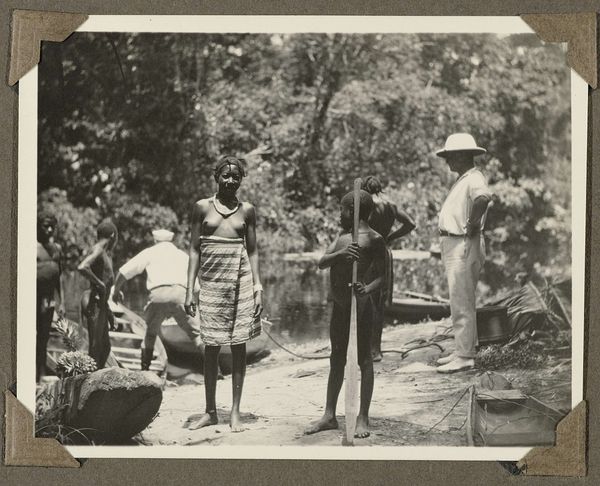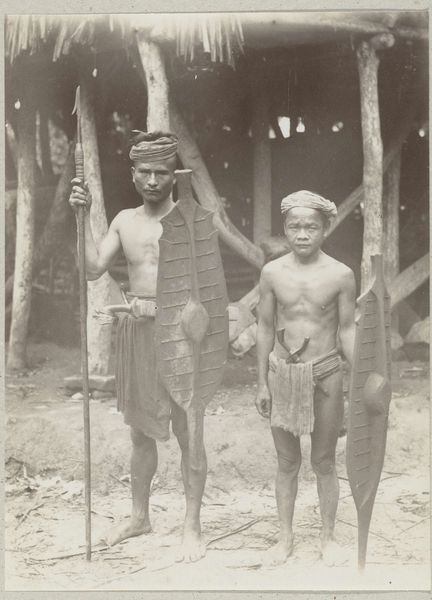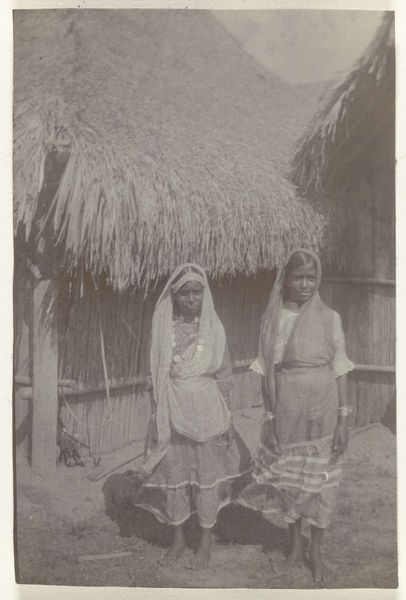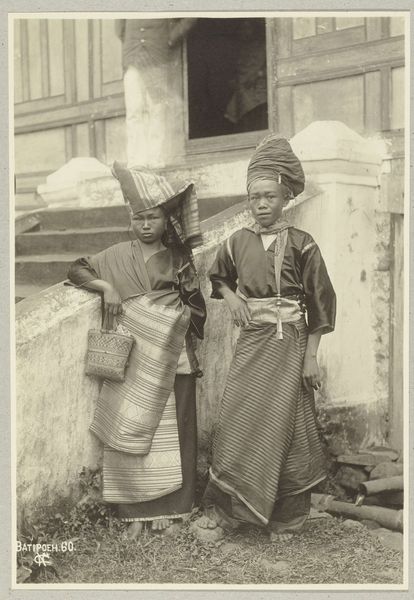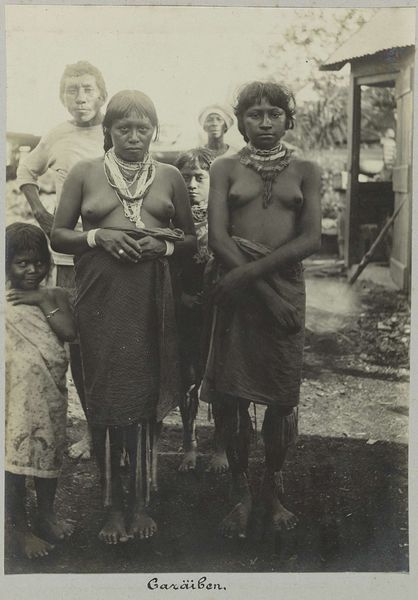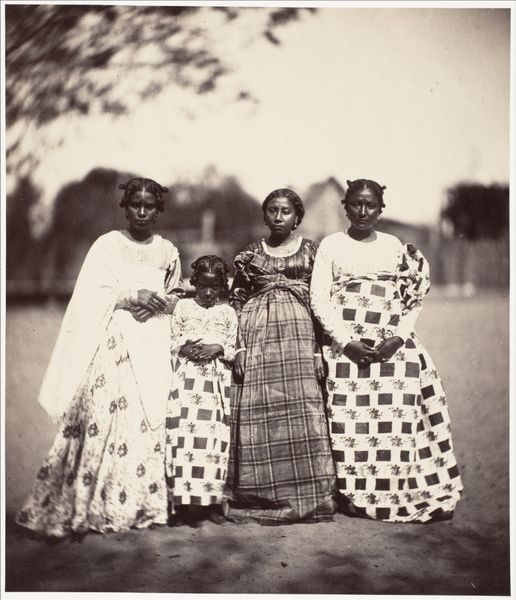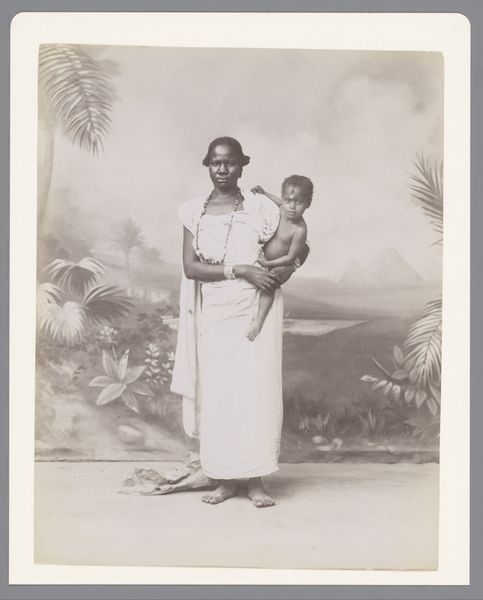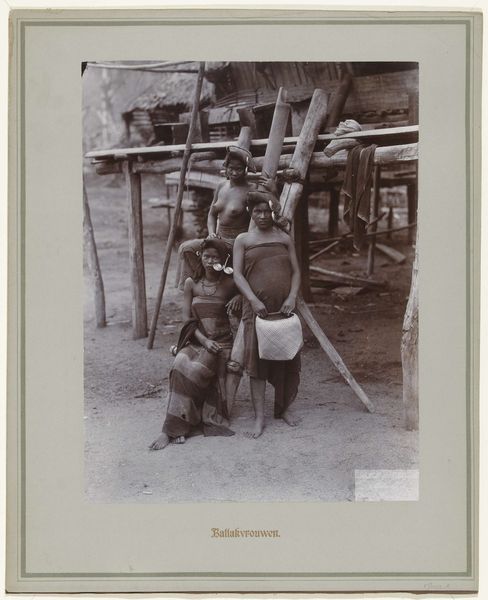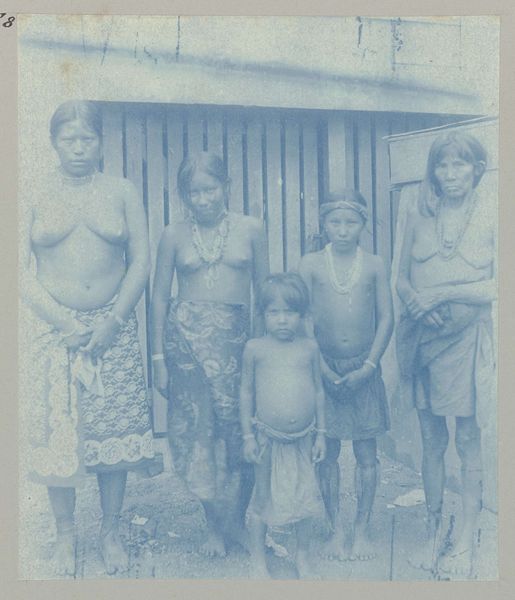
photography, gelatin-silver-print
#
portrait
#
african-art
#
photography
#
gelatin-silver-print
#
genre-painting
#
realism
Dimensions: height 112 mm, width 80 mm
Copyright: Rijks Museum: Open Domain
Curator: This photograph by Hendrik Doijer, taken sometime between 1903 and 1910, is titled "Marrongezin uit het dorp Gansee," depicting a Maroon family from the village of Gansee. It’s a gelatin silver print. What strikes you immediately about it? Editor: The subjects command the frame. The eyes, the subtle expressions...there is something haunting about the scene. And the paddle; is that for a river or the sea, because its meaning dominates here. It's as if it anticipates an ending that is either sad or triumphant depending on the reading. Curator: Right, well, these photographs were taken during a period of increasing colonial interest in documenting indigenous populations. This was often tied to a need for ethnographic understanding to serve the administrative agendas. Doijer worked as a government surveyor, making such depictions valuable for more than just art's sake. Editor: The arrangement has a strong composition but feels deeply anthropological. We see these figures posed almost as a typological study—family structure on display—rather than a glimpse into individual lives. It reminds me how early photography participated in these forms of looking. Does that resonate? Curator: Precisely. And yet, realism becomes so poignant through these photographic representations of the era. It highlights the complexities and tensions that exist in art which is meant for political means. Also how they reinforce narratives that define "us" versus "them." This image allows conversation around that complexity, regardless of Doijer's personal intention. Editor: The family unit in its symbolism is quite strong here, in spite of those complex tensions. Think of how water and paddles are used symbolically to point towards voyages or transformations. There are layers of the unknown when trying to read into those implications here in conjunction with the expressions on their faces. The faces indicate much in spite of their attempt at the realistic representation. Curator: This really makes one wonder the kind of cultural implications involved in that moment of capture for the subjects versus for Doijer and his colonial expectations of them, and us as viewers in our contemporary considerations of such representations. Thanks for helping give voice to that sentiment! Editor: Likewise! This photograph truly reminds us of how symbols can transform documentary art into profound allegories, even amidst colonial contexts.
Comments
No comments
Be the first to comment and join the conversation on the ultimate creative platform.



